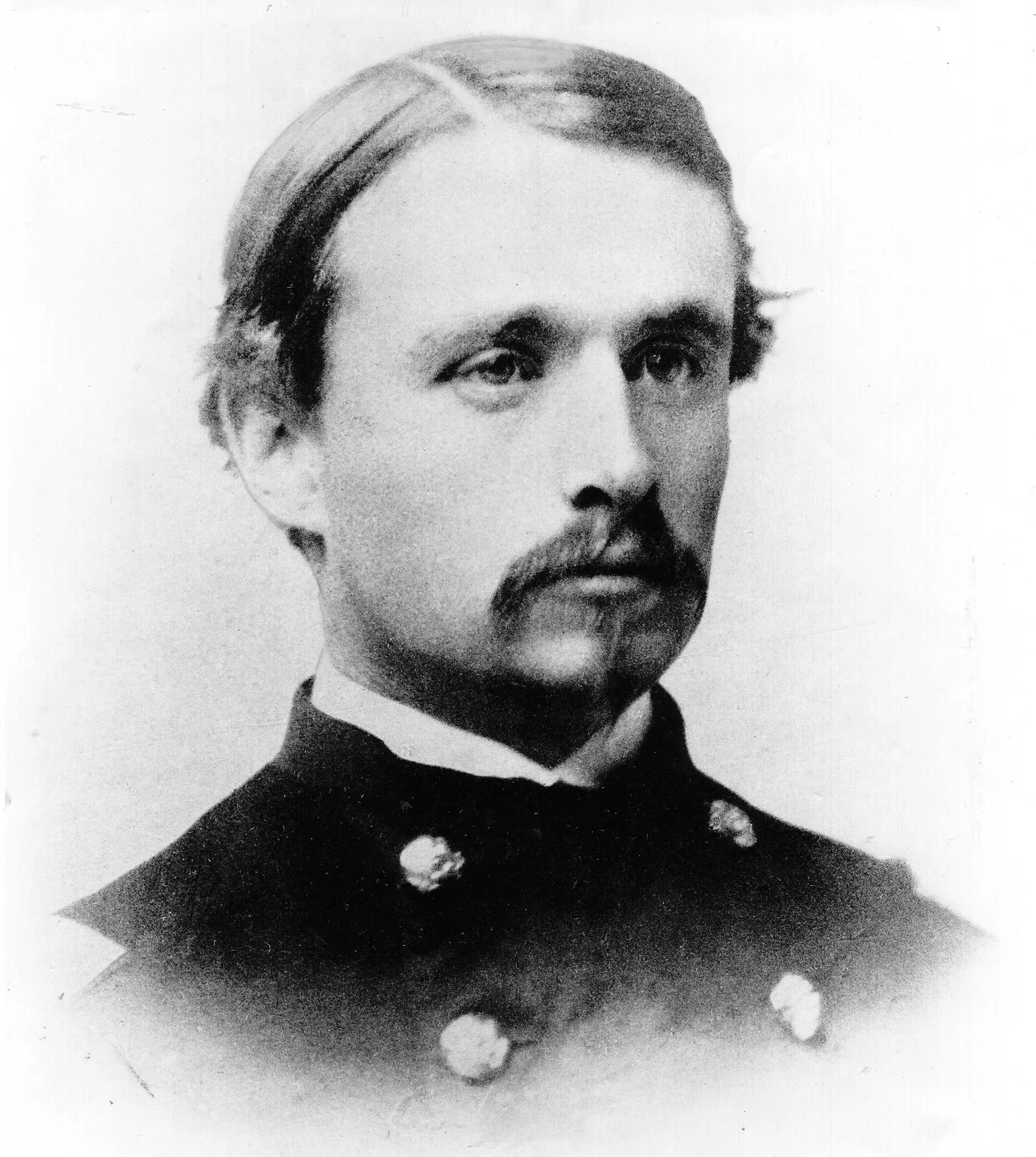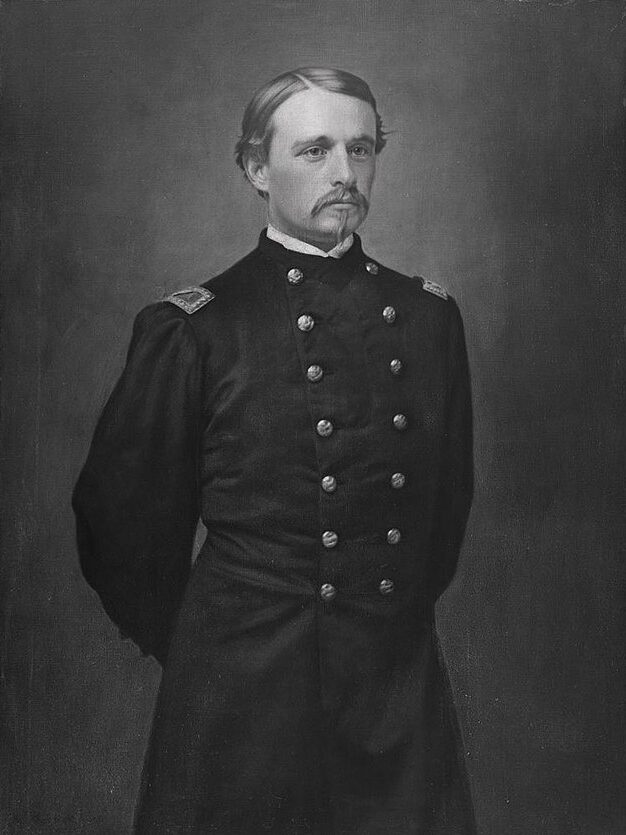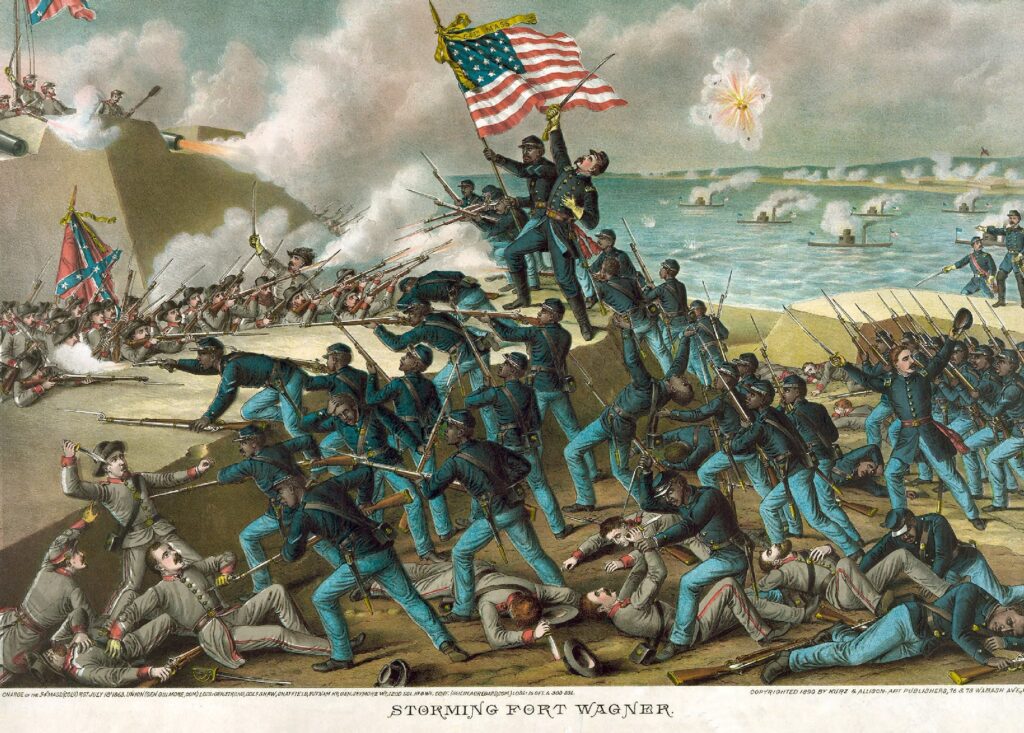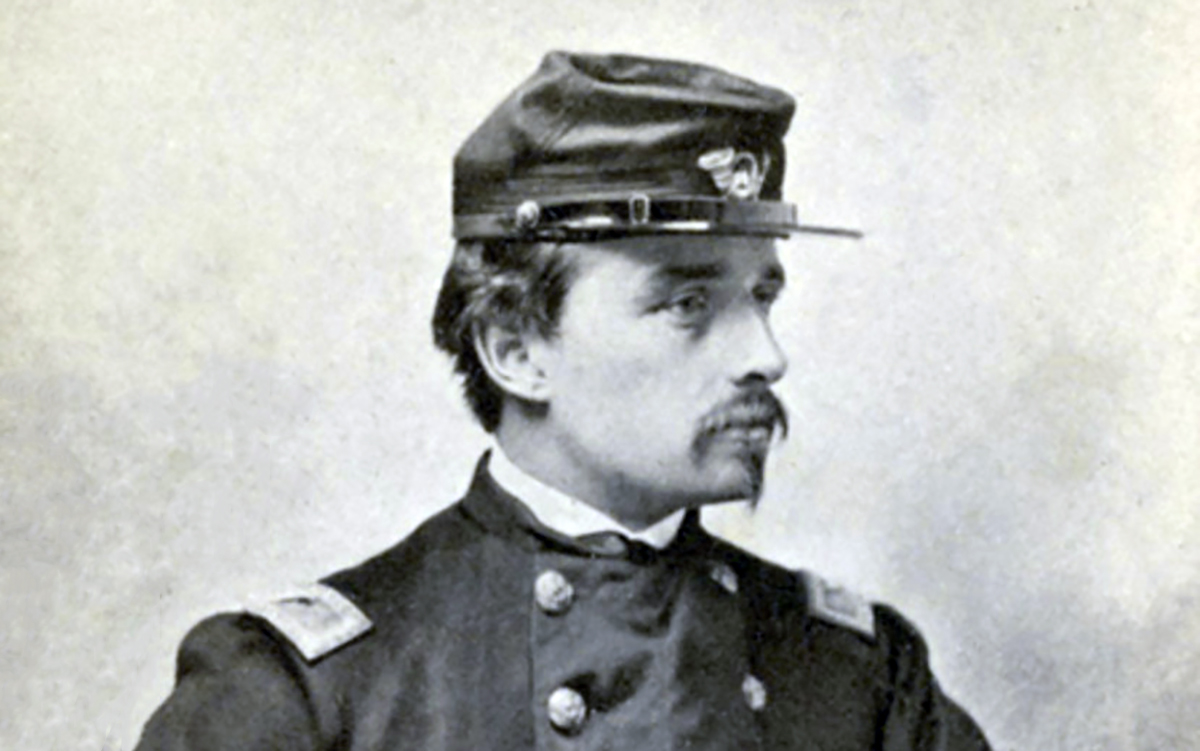The smoke from the Confederate shelling of Fort Sumter had barely cleared when Robert Gould Shaw, the son of wealthy abolitionists, volunteered for the Union cause in 1861. Federal troops withdrew from the fort in Charleston Harbor on April 13, 1861. Robert Gould Shaw joined the 7th New York Militia six days later.

He didn’t see combat with the New Yorkers. Instead, he waited out that enlistment and joined the 2nd Massachusetts Infantry from his home state as it was forming. Commissioned as a 2nd Lieutenant, he marched south and fought two losing battles at Winchester and Cedar Mountain before finally tasting victory at the bloody Battle of Antietam, where he was wounded.
Leadership in the Formation of the 54th Massachusetts Volunteer Infantry Regiment
As he recuperated back home, the Union ordered new regiments of Black troops raised. Massachusetts would lead the way, forming the 54th Massachusetts Volunteer Infantry Regiment. Even after the unit began to form, the state’s governor, John A. Andrew, needed competent, open-minded white officers to lead it.
Before the 54th Massachusetts proved itself in combat, it was widely believed that Black men would lack the discipline needed to be effective on the battlefield. White commanders thought they would be hard to train and would run when the shooting started. Gov. Andrew knew he needed a particular kind of officer, and Shaw was his man.

Shaw was approached by his father to take command of the 54th but was initially reluctant. He wanted to get back into the fight and didn’t want to leave the men he currently commanded. Shaw believed the Federal government would never send the 54th to actually fight. He eventually did take the command, becoming a colonel at 25 years old.
Many Black men volunteered to join the new regiment. So many, in fact, another unit was formed from the overflow, the 55th Massachusetts. After their basic training, they were shipped to the front in South Carolina, arriving in June 1863.
Shaw’s prediction became a reality when the 54th under Shaw arrived in South Carolina. The 54th was used for manual labor. However, Shaw pressed for combat duties and eventually got them, raiding the outlying islands of South Carolina and Georgia. He and the 54th were also sent on raiding parties deep inside Georgia, along the coastline, but it was back in Charleston where Shaw and the 54th would make history.
What Happened to Robert Gould Shaw in the Battle of Fort Wagner?
During the Civil War, Charleston, South Carolina, was a hotbed of blockade runners and smuggling for the Confederacy. To ensure the Union blockade kept its stranglehold on southern shipping, the Union sent Gen. Quincy Adams Gillmore to attack the approaches to Charleston Harbor.
Gillmore captured the southern half of Morris Island first and believed he had enough men and material to assault heavily-defended Fort Wagner on the north end. He was wrong. The entrenched Confederate defenders repulsed the Union attack on July 11, 1863, but Gillmore was far from done. He needed to take Fort Wagner before attacking Charleston.

On July 18, 1863, the 54th Massachusetts Volunteer Infantry Regiment volunteered to lead the second assault on Fort Wagner. They had to cross an open beach just 60 yards wide, between a creek and the ocean. After the open sand, they had to cross a moat and rows of sharpened Palmetto logs before they could even get into shooting distance of the fort, which was manned by 1,800 defenders.
Throughout the day of the battle, the Union Navy battered the fort with its offshore guns. When the sun finally set, Col. Shaw led the long march to the fort, with the 54th Massachusetts behind him. The naval barrage, it turned out, did little damage. So when the Union attack came, the defenders of Fort Wagner were able to put their guns to full use.
The 54th hit the fort hard, even reaching the parapets at the top of its walls. Union troops swarmed Fort Wagner’s other points as the 54th began to enter the fort, but it was all for naught. Col. Shaw was killed on the parapets as he rallied his men forward. By 10 p.m. that night, it was all over.
The Impact of Robert Gould Shaw and the 54th Regiment
Fort Wagner would hold out until it was abandoned on September 7, 1863. The battle was a loss for the Union and the 54th. Thirty men from the regiment, including Shaw and his other white officers, were dead. But news of the 54th’s bravery under fire spread across the Union, changing public sentiment about Black men serving in the Union Army. Public support led to the creation of more all-Black Union units, and large numbers of new Black recruits lined up to wear the Union blue.

After the battle, Confederate Gen. Johnson Hagood returned the bodies of white Union officers, but not those of Shaw and the others commanding the Black men of the 54th. The rebels buried Shaw and the others with the Black men of the 54th in a mass grave, intending it to be an insult. Upon hearing the news, Shaw’s father wrote:
Shaw and the bravery of the 54th Massachusetts Volunteer Infantry Regiment were later immortalized on the silver screen in the 1989 film, “Glory.”
Read About Other Profiles in Courage
If you enjoyed learning about Col. Robert Gould Shaw, we invite you to read about other profiles in courage on our blog. You will also find military book reviews, veterans’ service reflections, famous military units and more on the TogetherWeServed.com blog. If you are a veteran, find your military buddies, view historic boot camp photos, build a printable military service plaque, and more on TogetherWeServed.com today.

My great-grandfather Charles Burr Bridgham was the assistant surgeon for the 54th Massachusetts regiment. I have his medical case and his dress sword.
Hello! I’m putting together the details of CBB’s life for my son, Charlie. If it’s possible, I would love to have any pictures of his medical case and sword and any other reproducible information or photographs you might have. I hope there is someone in your family to inherit these items. This web site didn’t include any of your personal information, but I’m happy to share that I grew up in Rhode Island, completely unaware that Samuel Bridgham was the first mayor of Providence. I believe he lost an earlier election due to his abolitionist stance, which at that time was quite unusual.
Hope to hear from you and I wish you all health and happiness!
Sam Bridgham